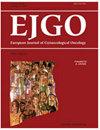Impact of percutaneous nephrostomy on clinical outcomes in advanced carcinoma cervix with obstructive uropathy at Kenyatta national hospital
IF 0.5
4区 医学
Q4 OBSTETRICS & GYNECOLOGY
引用次数: 0
Abstract
This retrospective study aimed to determine the impact of percutaneous nephrostomy (PCN) on the quality of life (QOL) and kidney function of women with advanced carcinoma of the cervix and obstructive uropathy in Kenyatta National Hospital by utilizing data from 2016 to 2019 and a follow-up patient interview in 2020. Sociodemographic data from patient records was reported as descriptive statistics. Serum urea, hemoglobin and creatinine levels before PCN and 72 hours, 1 month and 3 months after PCN were obtained. The changes were analysed using a paired t-test. Quality of life data before and after PCN tube insertion were collected using the structured Functional Assessment of Cancer Therapy and a cervix cancer-specific subscale (FACT-Cx) questionnaire, responses scored and an aggregate tallied. The QOL and kidney function data variables before and after PCN tube insertion were compared with statistical significance set at p < 0.05. Fifty eight study participants were enrolled, with an 80% power to detect a 5 fold change in kidney function. Percutaneous nephrostomy had an overall improvement in the quality of life (FACT-Cx total p = 0.041) with changes in aspects of physical well-being (p = 0.018) and additional concerns sexual function, self-esteem, appearance, urinary function, appetite and gastrointestinal function (p ≤ 0.001); but none in other aspects of the tool. Improvement was noted 72 hours after PCN tube insertion in 62% of patients’ urea (p = 0.033) and 64% of creatinine (p ≤ 0.001) levels but not sustained after 1 month and did not revert to normal levels. Hemoglobin levels did not improve. Percutaneous nephrostomy was found to have a short-term added value in management of women with obstructed uropathy in advanced carcinoma of the cervix as two aspects of their QOL improved while serum urea and creatinine levels improved slightly with no functional recovery.肯雅塔国立医院经皮肾造口术对晚期宫颈癌伴梗阻性尿路病变临床结果的影响
本回顾性研究旨在通过2016年至2019年的数据和2020年的随访患者访谈,确定经皮肾造口术(PCN)对肯雅塔国家医院晚期宫颈癌和梗阻性尿病女性的生活质量(QOL)和肾功能的影响。来自患者记录的社会人口学数据采用描述性统计。取PCN前、PCN后72小时、1个月、3个月血清尿素、血红蛋白、肌酐水平。使用配对t检验分析这些变化。使用结构化的癌症治疗功能评估和宫颈癌特异性亚量表(FACT-Cx)问卷收集PCN管插入前后的生活质量数据,并对回答进行评分和汇总。PCN管置入前后的生活质量和肾功能数据变量比较,p <处有统计学意义;0.05. 58名研究参与者入组,检测肾功能5倍变化的准确率为80%。经皮肾造口术总体上改善了患者的生活质量(FACT-Cx total p = 0.041),在身体健康方面(p = 0.018)以及性功能、自尊、外观、泌尿功能、食欲和胃肠功能方面(p≤0.001)发生了变化,但在该工具的其他方面没有变化。在PCN管插入72小时后,62%的患者尿素(p = 0.033)和64%的患者肌酐(p≤0.001)水平有所改善,但1个月后没有持续,也没有恢复到正常水平。血红蛋白水平没有改善。经皮肾造口术对晚期宫颈癌梗阻性尿路病变的治疗具有短期的附加价值,因为其生活质量有两个方面的改善,而血清尿素和肌酐水平略有改善,但没有功能恢复。
本文章由计算机程序翻译,如有差异,请以英文原文为准。
求助全文
约1分钟内获得全文
求助全文
来源期刊
自引率
25.00%
发文量
58
审稿时长
1 months
期刊介绍:
EJGO is dedicated to publishing editorial articles in the Distinguished Expert Series and original research papers, case reports, letters to the Editor, book reviews, and newsletters. The Journal was founded in 1980 the second gynaecologic oncology hyperspecialization Journal in the world. Its aim is the diffusion of scientific, clinical and practical progress, and knowledge in female neoplastic diseases in an interdisciplinary approach among gynaecologists, oncologists, radiotherapists, surgeons, chemotherapists, pathologists, epidemiologists, and so on.

 求助内容:
求助内容: 应助结果提醒方式:
应助结果提醒方式:


